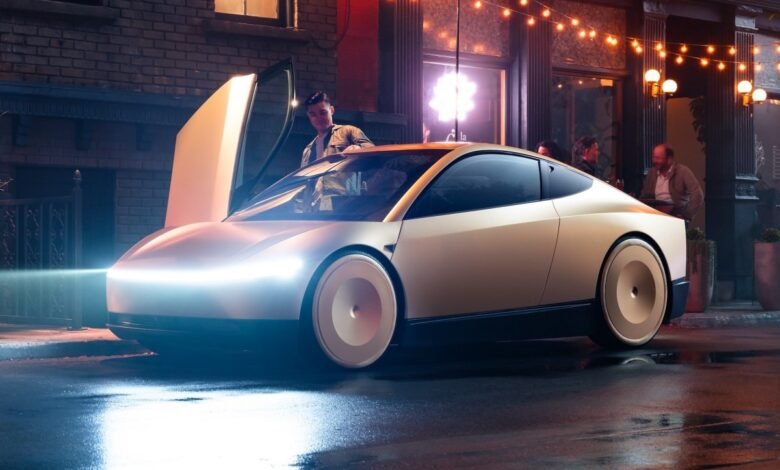Tesla’s Cybercab Production Starts in April, Musk Says

▼ Summary
– Tesla will begin producing the Cybercab, an autonomous electric vehicle without pedals or steering wheel, in April at its Austin factory.
– Shareholders approved a compensation package for CEO Elon Musk potentially worth up to $1 trillion, the largest in corporate history.
– The Cybercab is designed for unsupervised full self-driving with a goal of achieving the lowest cost-per-mile in autonomous mode.
– Tesla has not yet demonstrated its vehicles can drive themselves at scale without a safety monitor, despite years of promises.
– Regulatory approval is required for vehicles without standard controls, and Musk expressed confidence in deploying all Cybercabs produced.
Tesla is set to begin manufacturing its fully autonomous Cybercab this April at the company’s Austin, Texas facility, according to CEO Elon Musk. During a recent shareholder meeting, Musk confirmed the start date for the groundbreaking vehicle, which is engineered without traditional controls like pedals, a steering wheel, or side mirrors. This announcement arrived shortly after shareholders overwhelmingly approved a historic compensation package for Musk, potentially valued at up to one trillion dollars in Tesla stock.
Musk described the Cybercab as the first automobile specifically designed for unsupervised, full self-driving operation. He emphasized that the vehicle is optimized to achieve the lowest possible cost-per-mile when operating autonomously. Production will take place at the Austin factory, with Musk projecting an ambitious assembly line cycle time of just ten seconds. This represents a dramatic acceleration compared to the one-minute cycle currently required for a Model Y. Should this target be met, Tesla could theoretically manufacture between two and three million Cybercabs annually.
“So these will be everywhere in the future,” Musk stated confidently.
However, this vision appears to conflict with recent remarks from Tesla Chairwoman Robyn Denholm, who suggested to Bloomberg that a version with a steering wheel and pedals was being considered as a backup. Musk has since clarified that he rejected that idea, opting instead for a completely stripped-down design. The company has yet to demonstrate its vehicles can operate safely at scale without a human safety monitor, despite years of promises regarding its self-driving technology.
Tesla initially unveiled the Cybercab in October 2024, promising it would eventually be available for personal ownership. In the interim, the company launched a basic robotaxi service in select parts of Austin this past June. This initial service, however, utilizes Model Y SUVs equipped with a new “unsupervised” version of Tesla’s Full Self-Driving software, with a Tesla employee present in the passenger seat.
A significant hurdle for the Cybercab’s deployment will be securing regulatory approval from federal authorities. Introducing any vehicle without standard controls like a steering wheel onto public roads requires an exemption. While Amazon-backed Zoox recently obtained an exemption for limited demonstrations, it has not yet received approval for a commercial service. The regulatory path is notoriously challenging; General Motors, for instance, failed to gain approval for its custom-built Cruise Origin. Waymo, the current leader in U.S. robotaxi services, continues to use modified Jaguar I-Pace vehicles that retain traditional controls.
Musk expressed little concern about potential regulatory obstacles, thanking competitor Waymo for “paving the path.” He believes that as autonomous vehicles become more commonplace, regulators will have diminishing reasons to deny approval. “I think we’ll be able to deploy all the Cybercabs that we produce,” he told shareholders, predicting a future where the sight of a driverless car is completely normal.
(Source: TechCrunch)





